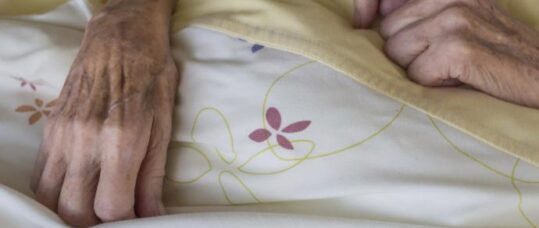NICE issues “individualised” end of life guidelines

End of life guidelines have been released by the National Institute for Health and Care Excellence (NICE) to help nurses provide “consistent, compassionate and high quality” care.
The NICE guideline follows the abolition of the Liverpool Care Pathway, a protocol for looking after people at the end of their life which was phased out last year after a government-commissioned review found serious failings in how the pathway was being implemented.
Related Article: Advice on Guillain-Barré risk for adult RSV vaccine updated by MHRA
The pathway “became increasingly controversial over the years with stories of fluids and medicines being withheld, or over-sedating the dying person. There were also problems with inexperienced staff recognising when someone was truly close to death, or if they had a possibility of recovery. It became seen as a ‘tick-box exercise’ and a ‘one-size-fits-all’ approach,” Sam Ahmedzai, a professor of palliative medicine and chair of the independent committee of experts who developed the guideline, explained.
In contrast, the major new guidelines recommend that nurses and other healthcare professionals create an individualised care plan in discussion with the dying person, those important to them and the multi-professional team. “This should include the person’s personal goals and wishes, preferred care setting, and current and anticipated preferences for symptom management,” the guidance suggests.
Susan Dewar, a community district nurse who was involved in creating the guideline, said: “Listening to patients and those close to them express their wishes is an integral part of nursing. Translating the information gathered leads on to the development of an individualised care plan for that person.”
Related Article: Lower stroke survival odds faced by people in poorer areas
The guideline admits that recognising someone is dying can be “difficult” so look for changes such as signs of agitation, Cheyne-Stokes breathing, noisy respiratory secretions, mottled skin, increasing fatigue and loss of appetite, changes in communication or deteriorating mobility.
The most appropriate available team member – who is competent, confident, and has a good rapport with the person – should be identified to discuss the dying person’s prognosis with them. Give them, and those important to them, accurate information, an opportunity to talk about any fears, and contact information for their care team, as well as opportunities to talk to them.
Related Article: Action needed to tackle untreated hearing loss in care homes
“Establish as early as possible the resources needed for the dying person (for example, the delivery of meals, equipment, care at night, volunteer support or assistance from an organisation) and their availability,” the guidance reads.
See the full guideline here.

See how our symptom tool can help you make better sense of patient presentations
Click here to search a symptom


End of life guidelines have been released by the National Institute for Health and Care Excellence to help nurses provide “consistent, compassionate and high quality” care



